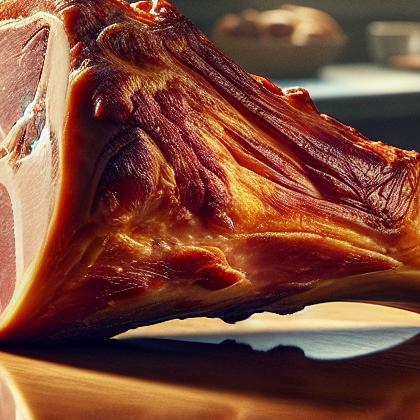Showing results for 'Ham bone'
close
Ham Bone

The ham bone is considered in some cuisines , such as Spanish as a culinary ingredient. It is considered as bone hind legs of pork and consist of the innominate bones (also known as " bone bridge" ) , femur, tibia and fibula, tarsus, metatarsus and falangianos bone and muscle mass that surrounds them, vessels , others. Each leg nerves and usually between 5% and 10% of its weight in bone. Often it used in the preparation of the most diverse cooked , because of the distinctive flavor that gives the wines their marrow . Usually its consumed soon because it has the ability to get stale .
Ham bone Pairs With:
Food Item
Flavor Affinity Level

Did you know there are 68 food flavor pairings in my database for Ham Bone available. What you are seeing above is a random list of 30 items which pair with Ham Bone.
For the entire list, beautifully formatted, enter your email address and click the download button below, then I'll email it to you as a PDF.
Ham bone Properties:
| Food Property | Type | Description |
|---|---|---|
| Flavor Profile | Umami | A savory and meaty taste often found in aged and fermented foods. |
| Texture | Firmness | The ham bone is usually firm and dense, with some meat still attached. |
| Nutritional Value | Macronutrients | The ham bone contains protein and fat, with minimal carbohydrates. |
| Color | Maillard Reaction | The surface of the ham bone may have a browned, caramelized color due to the Maillard reaction during cooking. |
| Aroma | Volatile Compounds | The ham bone may have a rich, meaty aroma when cooked. |
| Cooking Behavior | Heat Conductivity | The ham bone may retain heat well and take longer to cool down after cooking. |
Food Pairing App - Version 1.2.0
